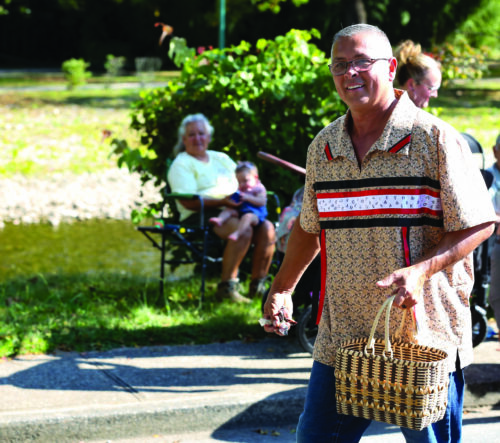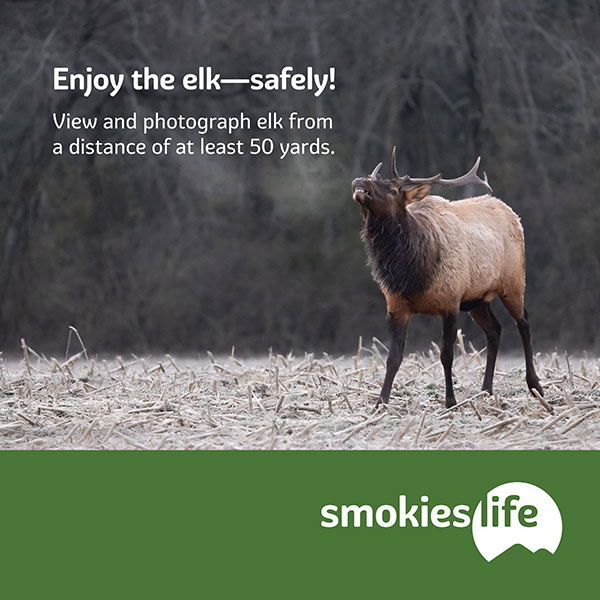By ROBERT JUMPER
Tutiyi (Snowbird) and Clyde, N.C.
“During the early part of the century, logging and farming provided income and subsistence, but the tribe also turned to tourism as a source of income. The first Cherokee Indian Fall Fair, in 1914, was subsidized by the tribal council specifically to encourage tourism. Cherokees found that they also had to change some of the traditions to meet the expectations of their market. Influenced by the Wild West shows of the 1890s, by the stereotype of patent medicine shows of the early 1900s, and by movies and finally television, visitors wanted to see natives in Plains Indian costume. Visitors also preferred shiny black Catawba pottery rather than the ancient, stamped pottery of the Cherokees, whose potters have only recently revived their own distinctive style. These market-driven changes in tradition coexist with the older traditions today.” (Duncan & Riggs, University of North Carolina Press, Chapel Hill/London, 2003)
One of my favorite Cherokee Indian Fair stories came from the late Eastern Band of Cherokee Indians Beloved Man Jerry Wolfe. He said, “back in the day”, which could have been anywhere from the 1930s to the 1960s for Jerry, he was there the first years that they introduced carnival rides to the Cherokee Fall Festival. Indians on the Qualla Boundary had rarely, if ever, seen carnival rides. Jerry said that instead of seeing lines of children waiting for their turns on the rides, it would be tribal elders. He said long lines of our grandparents and great-grandparents wanted to know what being on one of those things was like. And those tribal elders would ride the carnival rides repeatedly.

Ugvwiyuhi (Principal Chief) Michell Hicks hands out candy during the 2023 Cherokee Indian Fair Parade. (SCOTT MCKIE B.P./One Feather photo)
Some community members will argue that the Fall Festival was not created with the tourists in mind and that it has been a homecoming event for our people from the beginning. The fact is, both views are probably right. There is no question that the tribe has for many years tried to create a profitable model for the Fair and with the entry fee being waived for all tribal members, most of the generated revenue must come from tourists. But the community members are also correct that the 1914 Fair was a result of years of individual segments of the community having separate, smaller Fall Festivals that centered on the community as the target audience. So, was the Cherokee Indian Fair created to enhance tourism? Sure. Was the Fall Festival a community-oriented event? Absolutely. Both views are right. It is only a matter of viewpoint that causes debate.
Regardless of which side of that fence you fall on, the Cherokee Indian Fall Festival, or, as it is now called, the Cherokee Indian Fair, is the biggest event undertaking of the tribal family tourism program and the community. The five-day event (now stretched to six with the addition of a stickball schedule on Monday) requires lots of money, resources, and labor. It is an “all-hands-on-deck” affair, with the entirety of the Destination Marketing Organization (DMO) of the tribe and support from the rest of the Commerce Division, building the framework for the entire week of activities. Every Fair requires infrastructure work, including ensuring adequate water and power distribution, display construction, announcer stands for stickball, mainstage, massive tents, and landscaping. Negotiations for stage acts, a carnival, convenience facilities, food, and craft vendors must be made based on a predetermined layout of the fairgrounds. Also, it is necessary for the tribe’s finance office to make special arrangements for the hundreds of transactions that take place between vendors, performers, and contest winners. Those are just the things I can remember from when I had responsibility for some or all aspects of the Fair from about 2002 to 2014. It is truly an organizational nightmare with lots of moving parts.
In addition, the Qualla Arts and Crafts and Cherokee Agricultural Extension Office work tirelessly to coordinate the hundreds of entries submitted in the arts, crafts, and agricultural divisions. These two organizations ensure that there is a registration process, that entries meet criteria, organize the display of said entries, and coordinate the judging of the entries. For many years, these two entities have successfully planned and executed amazing works, from prize-winning beans to priceless works of art, handmade and homemade by tribal members. And I will never forget the care and protectiveness of people like Molly Grant, who for many years collected and protected photos and memorabilia of our beloved military veterans. She would coordinate the special display in the exhibit hall. She was careful to not permit those treasured items, many of them one of a kind, to be out of her sight. I always thought it was a shame that most of the exhibits, including the community exhibits, had to be put behind security fencing in order to protect them from theft or damage, but such is the world we live in. The Fair committee and fairgrounds staff did a good job of presenting the exhibits in such a way that the items were safe and visually accessible to the public.
For decades, the Welcome Center staff have played a critical role in the Cherokee Indian Fair. They take great pride and have a sense of ownership in one of the most watched attractions of the Fair, the Cherokee Indian Fair Parade. The team at the Welcome Center have routinely been tasked with coordinating and executing the parade, navigating road closures, line up of multiple bands, floats, and vehicles, and securing special guests to make the parade that much more spectacular. And we can’t forget the candy. Hundreds of tossed pieces of candy that have become an expectation at Cherokee parades. In addition, the Center staff have been tapped year after year to be the themed day planners for each day of the Fair. Each staff member, or pair of staff members, would receive a budget with which to plan and execute their special day of the Fair. Each “day planner”, who were members of our community, would concentrate on creating the most impactful experience they could with the resources they had, and sometimes they would reach out for donations and volunteers when their budgets wouldn’t accommodate a desired piece for their day.
In recent years, the challenges in putting on the Cherokee Indian Fair have been daunting. The Cherokee Indian Fairgrounds, or Ceremonial Grounds, was plagued with issues of poor drainage, to aging buildings including a critical failure in the covering of the amphitheater, to the space being undersized for the events coming into the grounds, including the Fair itself. In July 2022, the government approved the demolition of the buildings on the grounds and the demolition came quickly after. For the past two Fairs, the event has been relocated to the Harrah’s event center and, last year, to the old Cherokee High School grounds. When you have been in the same location for decades, then forced to move to an unfamiliar location, that adds more challenges to an already challenging event. Leadership in the Commerce Division and those charged with planning and execution of the Fair have made the best of a bad situation when it comes to moving the Fair to these new locations.
The Fair is a feast for the tastebuds as well. Indian dinners, Indian tacos, frybread recipes, fire roasted corn, and an assortment of “carnival food” which includes basically deep-fried everything are available in abundance. My favorite is blackberry dumplings with a dollop of ice cream. And of course, I haven’t been able to come home from a Fair without a bag of kettle corn from the Scragglepop vendor since my wife and I developed a tooth for it. Everyone has their favorite.
Finding the balance between building a profitable tourism event and ensuring the satisfaction of our community has always been a challenge. Year to year, those in leadership all the way to fairgrounds maintenance workers have worked very hard to make the best Cherokee Indian Fair possible. It is an event that requires you to “sweat the small stuff” because every detail of the execution of the event is essential to its overall success.
Just a personal note, in 2014, the American Eagle Foundation was invited to be a part of the 2014 Cherokee Indian Fair as part of Veterans Day at the Fair. They presented bald eagles and other raptors in an educational and entertaining way. The organizers of Veterans Day this year have invited the Eagle Foundation to bring these culturally significant birds back to the Fair. It’s one of those don’t miss moments at the Fair.
So many culturally significant events happen at the Fair that there isn’t room in the paper to do them justice, like the Miss Cherokee pageants, the Indian-ball or Stickball games, and all the language and traditional activities of Community Day.
Sometimes you can get too familiar with something and then you miss the magic of it. Those of us who have been involved in either putting on or reporting on the Fair sometimes take the event for granted. There is something for everyone at the Fair. Tribal members from all over the U.S. make the Cherokee Indian Fair their time of homecoming, one time a year that they gather and reconnect with their people and their land. Cultural tourists make the same trek but more so to learn about and embrace an ancient culture. Whether you call it the Cherokee Indian Fair or the Fall Festival it is a truly exceptional event.



